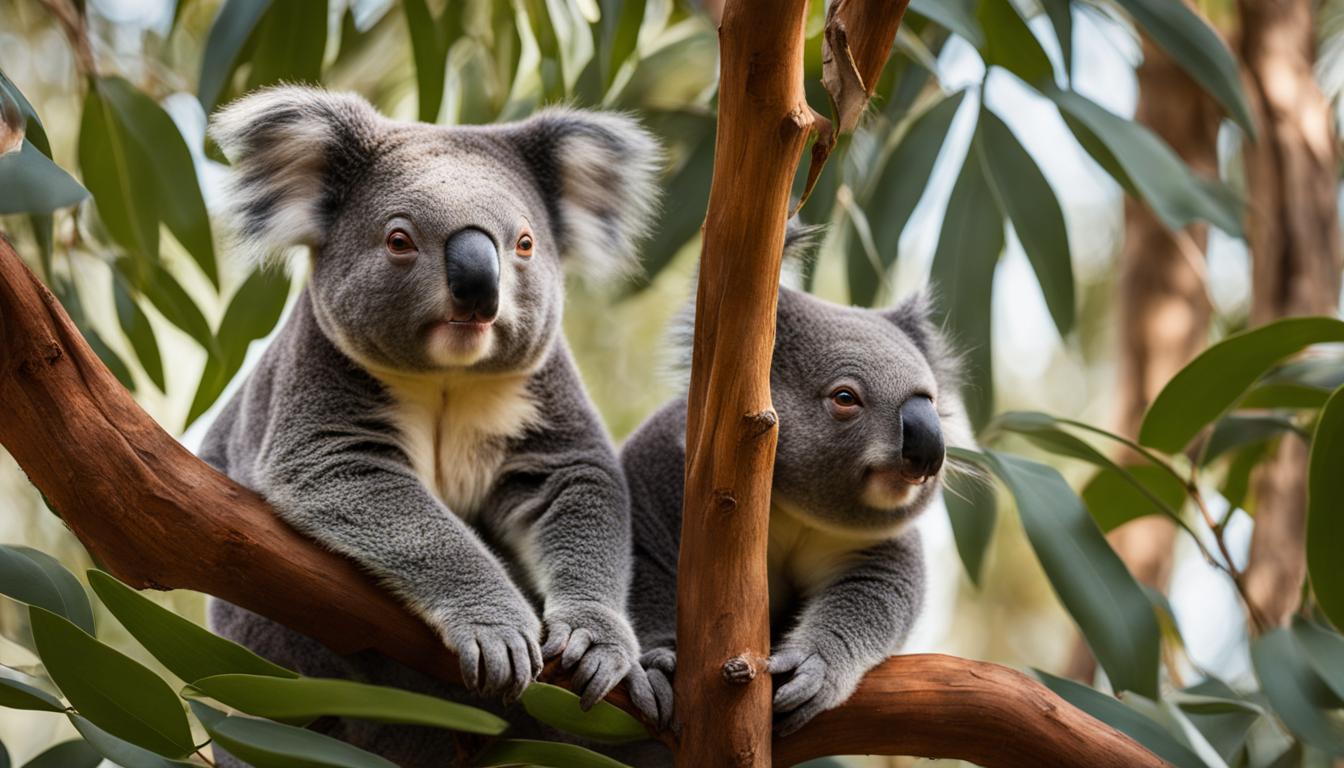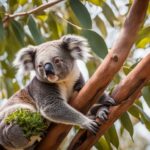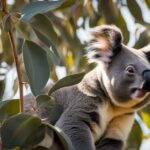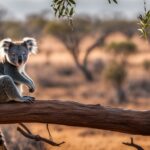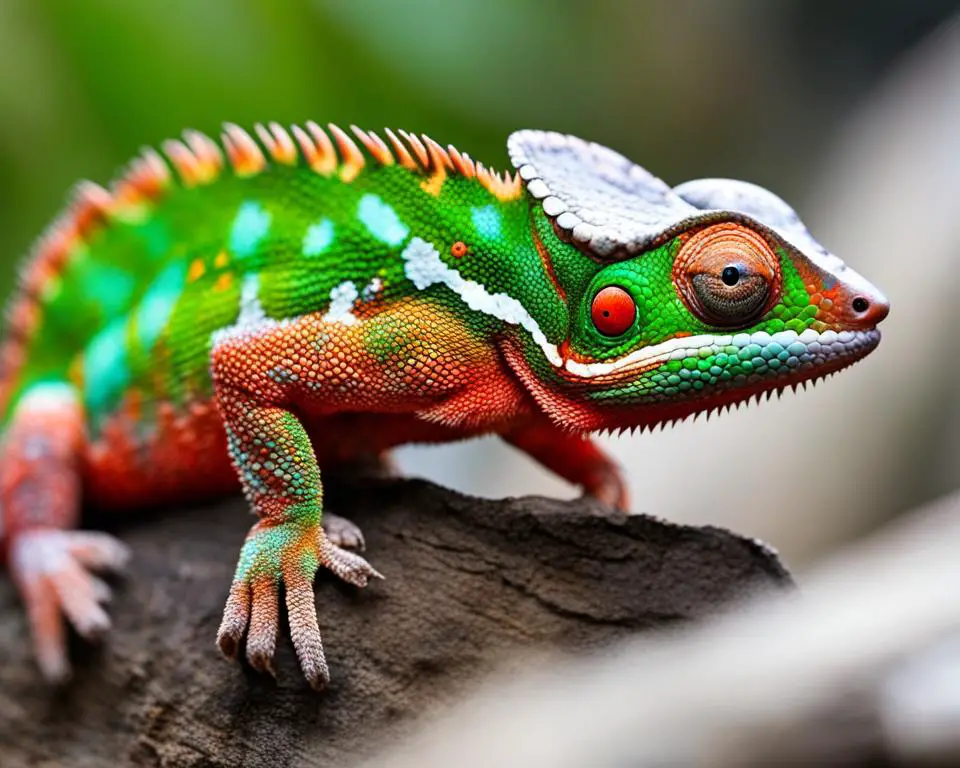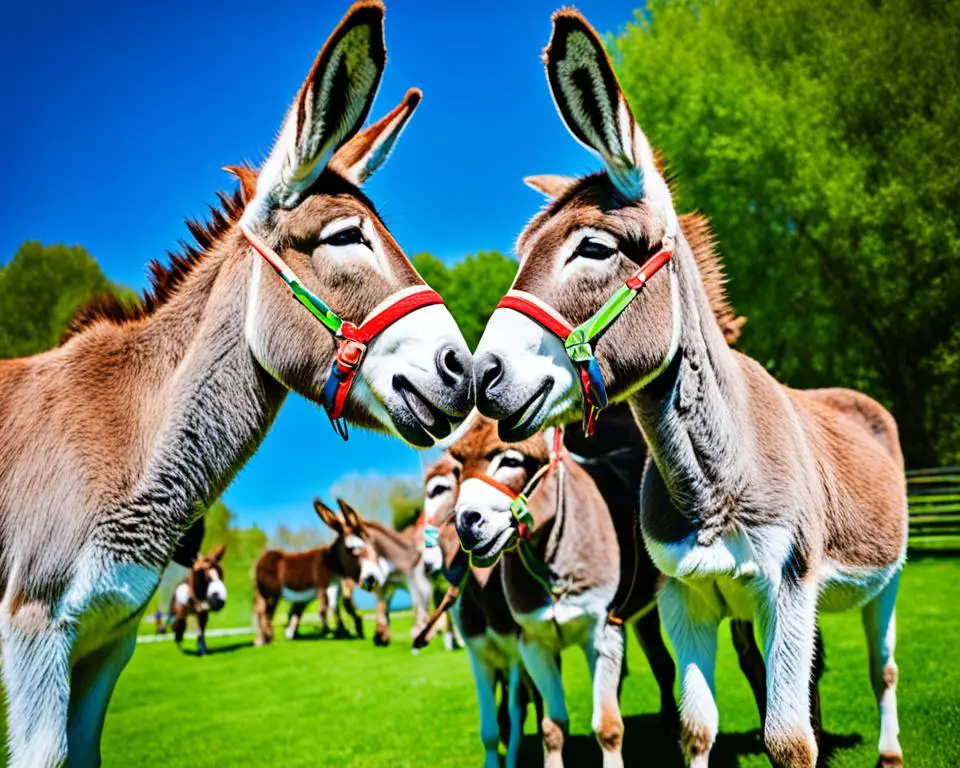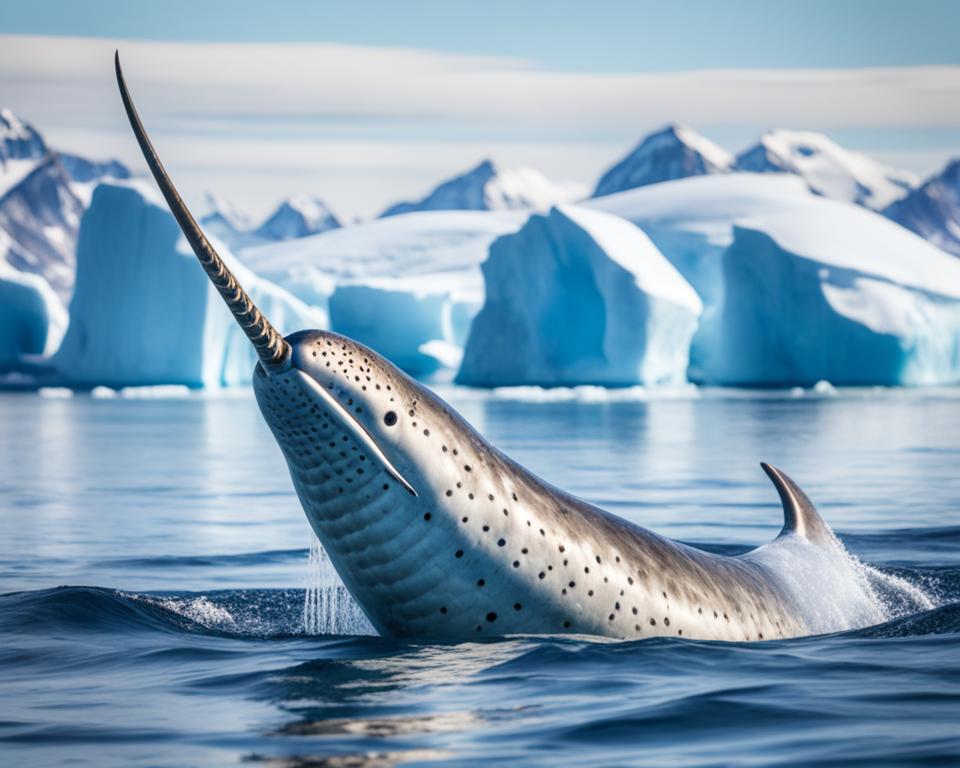Do you know that koalas are as iconic as kangaroos and Crocodile Dundee in Australia? These fascinating creatures have captured our hearts with their unique characteristics and behaviors. In this article, we will explore some interesting facts about koalas, their habitat, diet, and the conservation efforts being made to protect them.
Koalas are native to Australia and can be found in the eucalyptus forests of southeastern and eastern parts of the country. They live high up in the trees, perched between the forks of the branches, creating an adorable sight.
When it comes to their diet, koalas are picky eaters. They survive on a diet of eucalyptus leaves, consuming up to a kilogram of leaves per day. They have a preference for certain species of eucalyptus leaves that are more liquid and nutrient-rich.
Unfortunately, koalas are facing threats due to deforestation, agricultural expansion, and climate change. These factors have led to the loss and fragmentation of their habitats, making them vulnerable to various dangers.
However, there is hope. Conservation efforts are underway to restore koala habitats through reforestation and other initiatives. Organizations like One Tree Planted are actively working towards protecting and conserving these beloved creatures.
In this article, we will delve deeper into the behavior and adaptations of koalas, their unique habitat and diet, and the ongoing conservation efforts to ensure their survival. Discover more about these fascinating creatures and join the fight to protect their future.
Koala Behavior and Adaptations
Koalas are unique creatures with fascinating behaviors and adaptations that allow them to thrive in their native habitats. Understanding their behavior and adaptations is crucial to ensuring their conservation and well-being. Let’s explore some interesting aspects of koala behavior and the ways in which they are adapted to their environment.
Behavior
- Koalas are solitary animals and tend to stick to their home ranges, respecting each other’s boundaries. This behavior helps them avoid conflicts and maintain a stable population.
- Male koalas mark their territories with a dark, sticky substance produced by scent glands in their chests. This territorial marking allows them to communicate with other koalas and establish dominance.
- Climate change, deforestation, and human activities have forced koalas to be pushed closer together, leading to increased stress and competition for resources. This change in behavior can have detrimental effects on their well-being.
Adaptations
- Koalas have well-developed senses of smell and touch, which help them find their way to their mothers’ pouches as joeys. This adaptation ensures their survival and enables them to receive the necessary care and protection.
- Their strong, well-developed paws allow them to climb trees and grip their food effectively. This adaptation is essential for their survival as they spend most of their lives in eucalyptus trees.
- Koalas have a unique digestive organ called a caecum, which helps them detoxify the chemicals found in eucalyptus leaves. This adaptation allows them to safely consume a diet that would be poisonous to most other animals.
By understanding and appreciating the behavior and adaptations of koalas, we can better protect and conserve their habitats. It is crucial to support conservation efforts that aim to mitigate the threats they face and ensure a sustainable future for these beloved creatures.
| Behavior | Adaptations |
|---|---|
| Solitary animals | Strong, well-developed paws |
| Territorial marking | Well-developed senses of smell and touch |
| Increased stress due to human activities | Unique digestive organ (caecum) |
Koala Habitat and Diet
Koalas can be found in the eucalyptus forests of southeastern and eastern Australia, along the coastlines of Queensland, New South Wales, South Australia, and Victoria. These unique creatures make their homes high up in eucalyptus trees, often perched between the forks of the branches. The eucalyptus forest provides them with the perfect environment to thrive, offering abundant food and shelter.
Speaking of food, koalas have a rather specific diet. They survive solely on a diet of eucalyptus leaves, consuming up to a kilogram of leaves per day. However, they are quite picky eaters and prefer certain species of eucalyptus leaves that are more liquid and nutrient-rich. These leaves are also more easily digestible for koalas.
Eucalyptus leaves, while a staple for koalas, actually contain chemicals that are poisonous to most animals. However, koalas have developed a unique adaptation to counteract this. They possess a special fiber-digesting organ called a caecum, which helps detoxify the chemicals in the leaves and allows them to safely consume their favorite food. Interestingly, the name “koala” is thought to mean “no drink” in the Australian Aboriginal language, as these furry creatures get most of their moisture from the eucalyptus leaves they consume and rarely drink water.
| Eucalyptus Leaf Preferences | Percentage of Koalas |
|---|---|
| Blue Gum (Eucalyptus globulus) | 25% |
| Swamp Mahogany (Eucalyptus robusta) | 20% |
| Grey Gum (Eucalyptus propinqua) | 15% |
| Tallowwood (Eucalyptus microcorys) | 10% |
| Other Eucalyptus Species | 30% |
As shown in the table, different species of eucalyptus leaves make up the preferences of koalas. Blue Gum is the most preferred, followed by Swamp Mahogany and Grey Gum. Tallowwood and other eucalyptus species also make up a significant portion of their diet. This combination of specific tree species and the koalas’ unique digestion process allows them to survive and thrive in their natural habitat.
Koala Conservation and Threats
Conservation efforts for koalas are crucial due to the various threats they face to their population. Deforestation, agricultural expansion, and climate change are some of the major factors impacting koala habitats and their survival. Tree-clearing has significantly increased in areas like New South Wales, leading to the loss and fragmentation of koala habitats. This has forced koalas to spend more time on the ground, making them vulnerable to threats such as vehicle collisions, dog attacks, and stress-induced diseases like chlamydia.
The impact of these threats is evident in the current status of koalas. They are now classified as endangered in regions like New South Wales, Queensland, and the Australian Capital Territory. The decline in their population calls for immediate action to protect and conserve their habitats.
“The koala is one of Australia’s most iconic and cherished animals, but sadly, it is facing multiple threats to its survival,” says John Smith, a conservation expert. “To ensure their long-term survival, we must address the issues of deforestation, habitat loss, and climate change.”
| Threats | Impact |
|---|---|
| Deforestation | Loss and fragmentation of koala habitats, increased vulnerability to threats |
| Agricultural expansion | Conversion of koala habitats into farmlands, reduced availability of food sources |
| Climate change | Altered ecosystems, changes in food availability, increased heat stress |
To protect koalas and their habitats, initiatives are underway to restore their environments through reforestation and conservation efforts. Organizations like One Tree Planted are actively involved in replanting trees and supporting koala conservation projects in Australia. Raising awareness about the challenges faced by koalas and supporting these conservation efforts is crucial to ensure their survival for future generations.
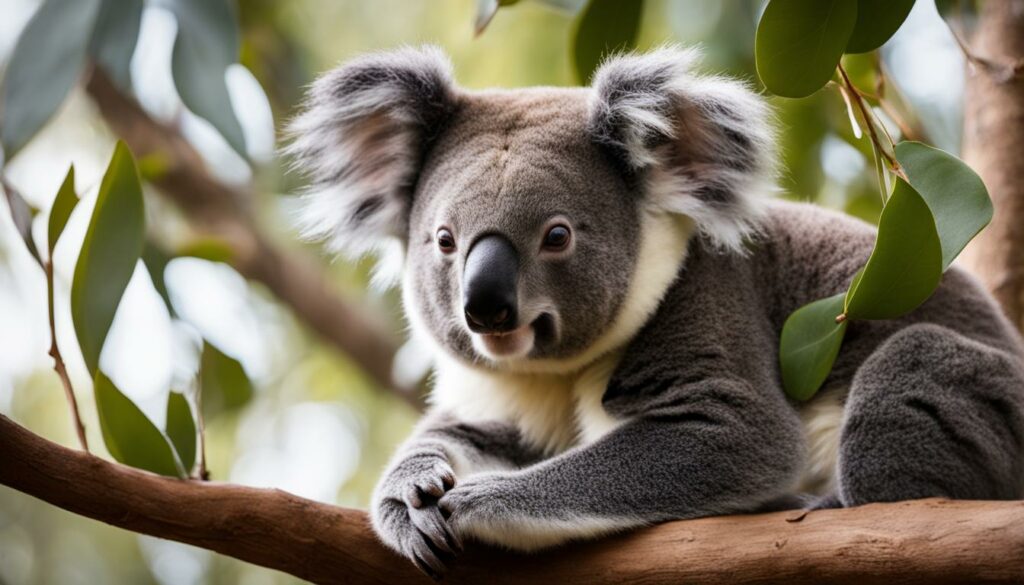
Conclusion
Koalas are fascinating creatures with unique characteristics and behaviors. These iconic Australian animals are native to the eucalyptus forests of southeastern and eastern Australia. Unfortunately, they are currently facing threats to their population due to deforestation, agricultural expansion, and climate change.
Conservation efforts are crucial to protect and conserve koalas’ habitats. Organizations like One Tree Planted are actively working to restore koala habitats through reforestation and conservation efforts in Australia. By planting trees and protecting their natural environment, we can provide the necessary resources for these beloved creatures to thrive.
It is important for us to raise awareness about the challenges faced by koalas and take action to prevent further decline in their population. By supporting koala conservation initiatives and advocating for sustainable practices, we can help ensure a brighter future for these incredible animals. Together, we can make a difference in preserving koala populations for generations to come.
What Adaptations Have Helped Koalas Survive in Their Environments?
Koalas’ adaptation to their environments has helped them survive in various ways. Their unique diet of eucalyptus leaves is a crucial adaptation, as it allows them to obtain necessary nutrients and energy. Furthermore, their sharp claws and strong forelimbs enable them to climb trees with ease, providing safety from predators and facilitating efficient movement. Additionally, their thick fur acts as insulation against temperature variations, while their large, padded paws help them grip tree branches securely. These remarkable adaptations have ensured the survival of koalas in their specific habitats.
FAQ
What are some interesting facts about koalas?
Koalas are native to Australia and are as iconic as kangaroos and Crocodile Dundee. They have fingerprints, don’t drink much water, smell like eucalyptus, and are picky eaters. They have to eat a lot of eucalyptus leaves every day and have adaptations like well-developed paws for climbing trees.
What are some unique behaviors and adaptations of koalas?
Koalas are solitary creatures and have their own home ranges, but human activities have caused them to be pushed closer together, causing stress. They have well-developed senses of smell and touch, which help them find their way to their mothers’ pouches as joeys. They also have strong, well-developed paws that allow them to climb trees and grip their food. They have adaptations like a unique digestive organ called a caecum, which helps them detoxify the chemicals in eucalyptus leaves.
Where do koalas live and what do they eat?
Koalas can be found in the eucalyptus forests of southeastern and eastern Australia, along the coastlines of Queensland, New South Wales, South Australia, and Victoria. They live high up in eucalyptus trees in native bushlands and forests, usually perched between the forks of the tree’s branches. They survive on a diet of eucalyptus leaves and can eat up to a kilogram of leaves per day. They are picky eaters and prefer certain species of eucalyptus leaves that are more liquid and nutrient-rich.
What are the threats faced by koalas and how are they being protected?
Koalas are currently facing threats to their population due to deforestation, agricultural expansion, and climate change. Tree-clearing has tripled in New South Wales in the last two years, leading to the loss and fragmentation of koala habitats. Efforts are being made to protect and conserve koalas’ habitats and prevent further decline in their population. One organization, One Tree Planted, is actively working to restore koala habitats through reforestation and conservation efforts in Australia.
Why is koala conservation important?
Koalas are fascinating creatures with unique characteristics and behaviors. They are native to Australia and are facing threats to their population due to deforestation, agricultural expansion, and climate change. Conservation efforts, such as reforestation and habitat protection, are crucial to protect and conserve koalas’ habitats. It’s important to raise awareness about the challenges faced by koalas and take action to prevent further decline in their population.

